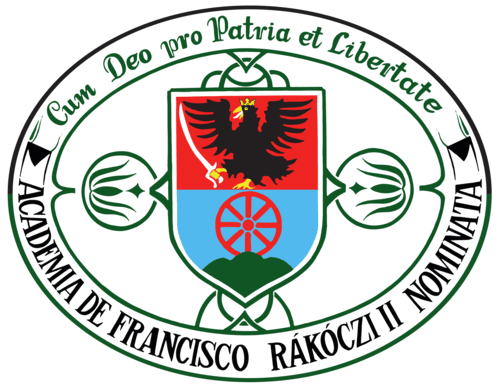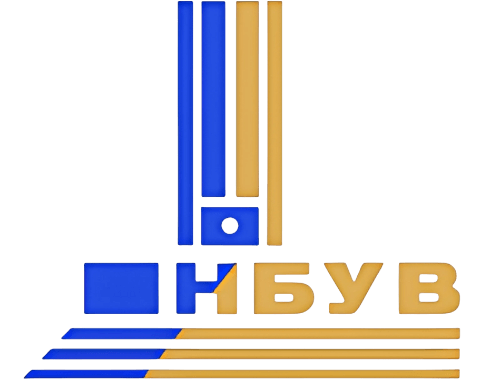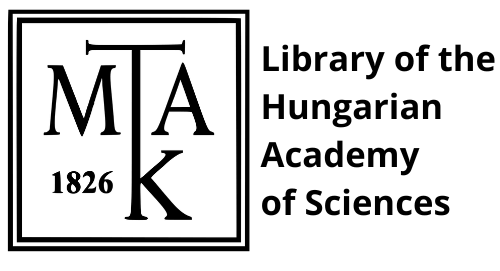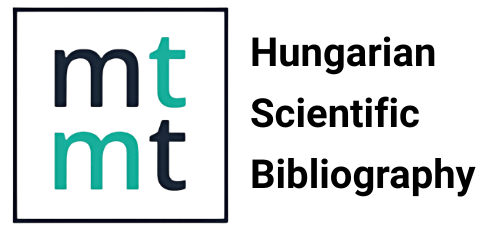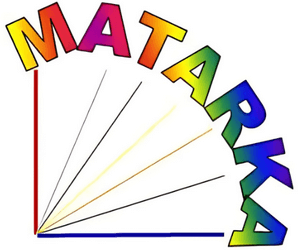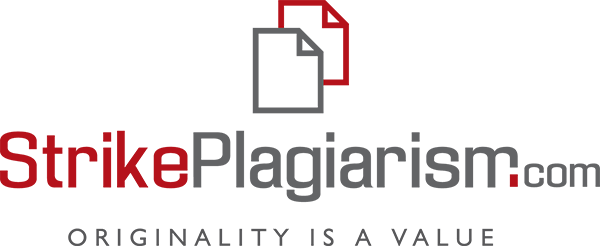The experience of living as a minority in Transcarpathia between the two world wars
Two examples based on fiction
DOI:
https://doi.org/10.58423/2786-6726/2023-1-76-101Keywords:
Transcarpathia (Subcarpathian Rus), multilingualism, minority, identityAbstract
The territory of the Transcarpathian region was an organic part of Hungary before the peace agreement that ended the First World War. After the region joined Czechoslovakia, the concept of Transcarpathians, Transcarpathian Hungarians was formed. Since literature reflects reality to a greater or lesser extent, we assume that the works written in this region contain linguistic, cultural and other elements of the existence of people who all of a sudden found themselves in a minority status. Thus, after analyzing samples of artistic prose written between the two world wars, we will be able to highlight certain aspects of the process of formation of the existence of a minority. The novel "Water Runs Between Two Shores" by the Hungarian writer Mihály Tamás depicts the period when Transcarpathian Hungarians suddenly found themselves in the status of a minority, and the Czech artist Ivan Olbracht highlights in his works the situation of two other ethnic groups at that time - Jews and Ukrainian Ruthenians.
An analysis of the prose of two writers will provide an opportunity to trace how the representatives of various ethnic groups living in the territory of modern Transcarpathia reacted to changes in social, political, economic, linguistic, and cultural circumstances, and how the multilingual colorful cultural reality is reflected on the pages of the works.
References
Balla Gyula, 1988. Korlátok és Korláthok ellen. Tamás Mihály életművéről [Barriers and Against Barriers. Life work of Mihály Tamás. Irodalmi Szemle Literary Review , 31. évf. 9. sz. 1078-1088. p.
Balogh Edgár, 2003. Tíz nap Szegényországban Ten days in the Country of the Poor. Budapest, Neumann Kht.
Barta Róbert, 2021. A magyarság vonzásában. Válogatás Carlile Aylmer Macartney írásaiból és beszédeiből In the attraction of Hungarians. A Selection from the Writings and Speeches of Carlile Aylmer Macartney . Debrecen, Debreceni Egyetem Történelmi Intézet.
Beregszászi Anikó, 2004. A kárpátaljai magyarok kódváltási szokásairólOn Transcarpathian Hungarians' code-switching habits. In: Beregszászi Anikó és Csernicskó István (szerk): Tanulmányok a kárpátaljai magyar nyelvhasználatról Studies on Transcarpathian Hungarian language use . Ungvár, PoliPrint, 36–43. p.
Csanda Gábor, 2012. Tamás Mihály és Tamás Mihályné levélváltása Csanda Sándorral II. Exchange of letters between Mihály Tamás and Mrs. Tamás with Sándor Csanda II Irodalmi Szemle Literary Review, 55. évf. 9. sz. 37-45. p. (https://irodalmiszemle.sk/¬2012/09/csanda-gabor-tamas-mihaly-es-tamas-mihalyne-¬¬¬levelvaltasa-csanda-sandorral-ii/)¬
Csanda Sándor, 1966. Tamás MihályMihály Tamás. Irodalmi Szemle Literary Review , 9. évf. 8. sz. 727-729. p.
Csernicskó István – Fedinec Csilla, 2019. Podkarpatszka Rusz eszméje a Csehszlovák Köztársaságban és a nyelvi viszonyok The idea of Podkarpackie Rusz in the Czechoslovak Republic and linguistic relations. In Csernicskó István és Fedinec Csilla (szerk.): „Ruszin voltam, vagyok, leszek…” Népismereti olvasókönyv "I was a Rusyn, I am, and I will be..." Folklore reading book. Budapest, Charta XXI Egyesület–Gondolat Kiadó, 117–137. p.
Csernicskó István, 2013. Államok, nyelvek, államnyelvek. Nyelvpolitika a mai Kárpátalja területén (1867–2010) States, languages, state languages. Language policy in today's Transcarpathia (1867-2010). Budapest, Gondolat Kiadó, 575 p.
Fábry Zoltán, 1932. Az éhség legendája The legend of hunger . Kárpátalja: 1932.
Fábry Zoltán, 1968. Tamás Mihályra emlékezve In memory of Mihály Tamás. Irodalmi Szemle Literary Review , 11. évf. 2. sz. 97-98. p.
Fedinec Csilla – Szarka László, 2013. A kárpátaljai cionista mozgalom sajátosságai. In: Bányai Viktória – Fedinec Csilla – Komoróczy Szonja Ráhel (szerk.): Zsidók Kárpátalján. Történelem és örökség. Aposztróf, Budapest.
Fedinec Csilla, 2001. Iratok a kárpátaljai magyarság történetéhez. 1918 – 1944. Törvények, rendeletek, kisebbségi programok, nyilatkozatok Documents for the history of Transcarpathian Hungarians. 1918 – 1944. Laws, decrees, minority programs, declarations.. Fórum Intézet, Lilium Aurum. Dunaszerdahely
Féja Géza, 1933. Az irói szabadság sírjánál At the grave of the freedom of the writer . Literatura Literature, 8. évf. 201-202. p.
Horváth Krisztián, 2013a. Egy (ön)kritikus cseh Kárpátalján A (self) critic in Czech Transcarpathia. Nyelv és Tudomány Language and Science , 2013. szeptember 17. (https://www.nyest.hu/hirek/egy-on-kritikus-cseh-karpataljan?¬force_¬desktop)
Horváth Krisztián, 2013b. A gyarmat neve: KárpátaljaThe name of the colony: Transcarpathia. Nyelv és Tudomány Language and Science , 2013. október 2. (https://www.nyest.hu/hirek/a-gyarmat-neve-karpatalja-2)
Judson, Pieter M., 2016. The Habsburg Empire. A New History. Cambridge, Massachusets. London, England
Mádi Gabriella, 2020. The representation of the characteristics of minority identity in Péter Hunčík’s novel Borderline Case. In: Erika-Mária Tódor, Enikő Pál, Zsuzsanna Dégi, Vilma-Irén Mihály (szerk): Spaţii Intermediare/Spaces in Between. Cluj-Napoca, Editura Scient ia, 151–164. p.
Marék Antal, 1935. Tamás MihályMihály Tamás. Magyar MinervaHungarian Minerva, 6. évf. 4. sz. 120-121. p.
Márku Anita, 2003. „Po zákárpátszki. Kétnyelvűség, kétnyelvűségi hatások és kétnyelvű kommunikációs stratégiák a kárpátaljai magyar közösségben " Po zákárpátszki.” Bilingualism, effects of bilingualism and bilingual communication strategies in the Transcarpathian Hungarian community . Ungvár, Poligráfcentr Líra, 244. p.
Moleron, Claire, 2019. State legitimacy and continuity between the Habsburg Empire and Czechoslovakia: The 1918 Transition in Prague. In: Paul Miller – Claire Morelon (ed.) Embers of Empire. Continuity and Rupture in the Habsburg Successor States after 1918. New York, Berghan Books
Molnár D. István, 2018. Perifériáról perifériára. Kárpátalja népessége 1869-től napjainkig From periphery to periphery. The population of Transcarpathia from 1869 to the present day. Budapest, MTA TK Kisebbségkutató Intézet, Kalligram, 180 p.
Olbracht, Ivan, 1973. Átok völgye. Nyikola Suhaj, a betyár Valley of Curses. Nyikola Suhaj, the outlaw . Budapest, Európa Könyvkiadó, 605. p.
Ormos Mária, 1998. Magyarország a két világháború korában (1914–1945)Hungary during the two world wars (1914–1945). Debrecen, Csokonai kiadó. 324. p.
Papp Adrienn, 2014. Identitást alakító tényezők Tamás Mihály Két part között fut a víz című regényében Identity-shaping factors in Tamás Mihály's novel Water Runs Between Two Shores.. In Fedinec Csilla – Szoták Szilvia (szerk.): Közösség és identitás a Kárpát-medencében Community and identity in the Carpathian Basin. Budapest, Balassi Intézet Márton Áron Szakkollégium, 268–282. p.
Passia, Radoslav, 2016. Idegen a határon. A Keleti-Kárpátok a XX . századi közép-európai irodalmakban Stranger on the border. The Eastern Carpathians in the 20th century. in 19th century Central European literature. Irodalmi szemle Literature review 59. évf. 10. sz. 11-32. p.
Plachta, Miloš, 2009. Antal Stašek (JUDr. Antonín Zeman), 2. část (1843–1931)Antal Stašek (JUDr. Antonín Zeman), 2nd part (1843–1931). Semilské noviny : informační měsíčník občanů Semilska Semilské news: information monthly for the citizens of Semilsko.. 31. březen 2009, roč. XVII, čís. 3, s. 13.
Rotman Miklós, 1982. Kik érted haltak... Forradalmár elődenik arcképcsarnoka Who died for you... Portrait gallery of revolutionary predecessors . Uzshorod, Kárpáti Kiadó
Spiró György, 1983. Ivan Olbracht. Kelet-európai íróportrék Ivan Olbracht. Portraits of Eastern European writers , III. Jelenkor Present age 1983/1, 61–69. p.
Stergar, Rok, 2019. Evolution of Linguistic Policies and Practices of the Austro-Hungarian Armed Forces in the Ear of Ethnic Nationalisms: The Case of Ljubljana-Laibach. In Markian Prokopovych–Carl Bethke–Tamara Scheer (szerk.): Language Diversity in the Late Habsburg Empire. Leiden–Boston, Brill, 50-71.
Szakál Imre, 2016. „… Egymásra zuhanó sűrű történések…” A csehszlovák hatalomátvétel Beregszászban az első világháborút követően "... Dense events falling on top of each other..." The Czechoslovak takeover of Beregsász after the First World War . In Kónya Peter (szerk.): Prvá svetová vojna v Karpatoch– Első világháború a Kárpátokban– Перша світова війна в Карпатах World War I in the Carpathians . Prešov, Vydavateľstvo Prešovskej univerzity v Prešove, 295–308.
Szakál Imre, 2017a. Telepesek és telepes falvak a Csehszlovák Kárpátalján Settlers and settlements in Czechoslovakian Transcarpathia. Budapest, MTA TK Kisebbségkutató Intézet–Kalligram, 181. p.
Szakál Imre, 2017b. „rendeletek szóról-szóra lefordítassanak…”Hivatali nyelvhasználat Beregszászban 1919-1920-ban "orders are to be translated word for word..." Official language use in Beregszasz in 1919-1920 . In Márku Anita és Tóth Enikő (Szerk.): Többnyelvűség, regionalitás, nyelvoktatás. Tanulmányok a Hodinka Antal Nyelvészeti Kutatóközpont kutatásaiból III. Multilingualism, regionalism, language education. Studies from the researches of the Antal Hodinka Linguistic Research Center III , Ungvár, RIK-U, 61–72.
Száz Pál, 2016. Az etnográfiai írás sajátosságai és az idegenség alakzatai Ivan Olbracht kárpátaljai riportjaiban The peculiarities of ethnographic writing and the shapes of foreignness in Ivan Olbracht's Transcarpathian reports. Irodalmi Szemle Literary Review, 50. évf. 1-2. sz. 60-81. p. (https://irodalmiszemle.sk/¬2016/02/4000/)
Száz Pál, 2018. Ethnographic writing and the Subcarpathian reportages of Ivan Olbracht. In Németh Zoltán – Magdalena Roguska (szerk.): Transzkulturalizmus és bilingvizmus az irodalomban. Transkulturalizmus a bilingvizmus v literatúre Transculturalism and bilingualism in literature. Nyitra, Közép-európai Tanulmányok Kara, Nyitrai Konstantin Filozófus Egyetem, 61–70. p.
Szvatkó Pál, é.n. Szlovenszkói magyar irodalom Hungarian literature in Slovensko. In Szlovenszkói magyar elbeszélők Hungarian authors in Slovensko. Budapest, Franklin, 5–24. p.
Tamás Mihály, 1984. Szép Angéla háza Beautiful Angela's house. Bratislava, Madách Könyv- és Lapkiadó, 133. p.
Tamás Mihály, é.n. Két part közt fut a víz Water running between two shores. Budapest, Franklin, 205. p.
Zádor András, 1987. Cseh irodalomról, cseh írókról About Czech literature, Czech writers. Irodalmi Szemle, 30. évf. 1. sz. 48–53. p.
URL1: Papers Relating to the Foreign Relations of the United States, The Paris Peace Conference, 1919, Volume III https://history.state.gov/historicaldocuments/-frus1919Parisv03/d60 Завантажено: 1 травня 2023 р.).
Downloads
Published
How to Cite
Issue
Section
License
Authors retain copyright and grant the journal the right of first publication. The work is simultaneously licensed under a Creative Commons Attribution 4.0 International License (CC BY 4.0), which permits others to share the work with appropriate credit given to the author(s) and the initial publication in this journal.



